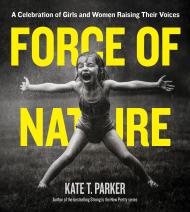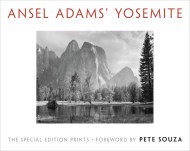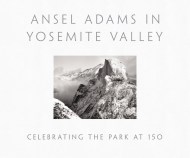By clicking “Accept,” you agree to the use of cookies and similar technologies on your device as set forth in our Cookie Policy and our Privacy Policy. Please note that certain cookies are essential for this website to function properly and do not require user consent to be deployed.
Ansel Adams in the Canadian Rockies
Contributors
Photographs by Ansel Adams
Formats and Prices
Price
$30.00Price
$30.00 CADFormat
Format:
Hardcover $30.00 $30.00 CADAlso available from:
The first book of Ansel Adams’s early photographs of the Canadian Rockies.
“These mountains are breathtaking – utterly different than anything we have seen. The peaks and forest and ‘tone’ fulfill almost every ideal I have had of what ‘my’ mountains could be. . . These are the great mountains we dream about.” — Ansel Adams to his wife Virginia, 1928
The Sierra Club’s twenty-seventh annual outing or “High Trip” was Ansel Adams’s first as official photographer. It was during this expedition to the Canadian Rockies in 1928 that Ansel began to find his voice as a photographer. In Ansel Adams in the Canadian Rockies, we discover images of celebrated natural sites including Mount Robson, Amethyst Lake, Drawbridge Peak, and Bennington Glacier that foreshadow the majestic mountain vistas for which Adams would become renowned.
A fine chronicle of one of Ansel Adams’s earliest major photographic expeditions, and the only one he ever made outside of the United States, this book also serves as a record of Ansel’s emerging style during these crucial years in his artistic development.
“These mountains are breathtaking – utterly different than anything we have seen. The peaks and forest and ‘tone’ fulfill almost every ideal I have had of what ‘my’ mountains could be. . . These are the great mountains we dream about.” — Ansel Adams to his wife Virginia, 1928
The Sierra Club’s twenty-seventh annual outing or “High Trip” was Ansel Adams’s first as official photographer. It was during this expedition to the Canadian Rockies in 1928 that Ansel began to find his voice as a photographer. In Ansel Adams in the Canadian Rockies, we discover images of celebrated natural sites including Mount Robson, Amethyst Lake, Drawbridge Peak, and Bennington Glacier that foreshadow the majestic mountain vistas for which Adams would become renowned.
A fine chronicle of one of Ansel Adams’s earliest major photographic expeditions, and the only one he ever made outside of the United States, this book also serves as a record of Ansel’s emerging style during these crucial years in his artistic development.
- On Sale
- Oct 29, 2013
- Page Count
- 96 pages
- Publisher
- Little, Brown and Company
- ISBN-13
- 9780316243414
Newsletter Signup
By clicking ‘Sign Up,’ I acknowledge that I have read and agree to Hachette Book Group’s Privacy Policy and Terms of Use







